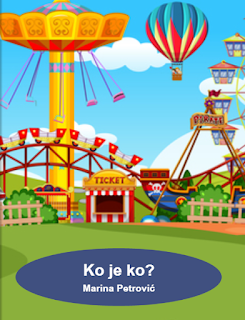Before we continue with the video lessons focusing on aspect differences, let's be impratctical and talk only about the grammar today:
As you probably noticed in the previous post for the intermediate level, one can turn an imperfective verb into a perfective one by adding a prefix (buditi - probuditi , razbuditi ). But this is not the only way to change an aspect of a verb. You can also:
As you probably noticed in the previous post for the intermediate level, one can turn an imperfective verb into a perfective one by adding a prefix (buditi - probuditi , razbuditi ). But this is not the only way to change an aspect of a verb. You can also:
- add a prefix to the verb and it becomes perfective
- add a suffix to the verb and it becomes perfective (dremati - dremNUti)
- alter the stem (odmoriti - odmarati, which I explained in the previous post)
But, we have to be cautious with the process of prefixation ! Quite often the meaning of the verb does not bear only the difference in aspect ( whether the action is complete or incomplete: "I wrote" - "I was writing" : Napisao sam = Pisao sam). It more frequently bears a new layer of meaning, like the ones mentioned in "buditi" becoming perfective in "probuditi" or "razbuditi", so we need to use phrasal verbs in English to accurately convey the additional meaning.
Let me give you a few examples of:
- clear-cut distinction pefective-imperfective (without any additonal meanings):
- pisati - napisati (to be writing - to have written/wrote)
- čitati - pročitati (to be reading - to have read/ read )
- the prefix adding new meanings :
- igrati - odigrati / izigrati / zaigrati (to be playing - to have played / to play up / to play upon* these translations are incomplete and need to be read in the sentences, which will be the aim of our future lessons at this level )
- pisati - prepisati (to copy) / zapisati (to jot down) / upisati (to enroll)
Until the next lesson, do practise the aspect in Serbian by doing some fun exercises published in the previous posts:

.png)


















